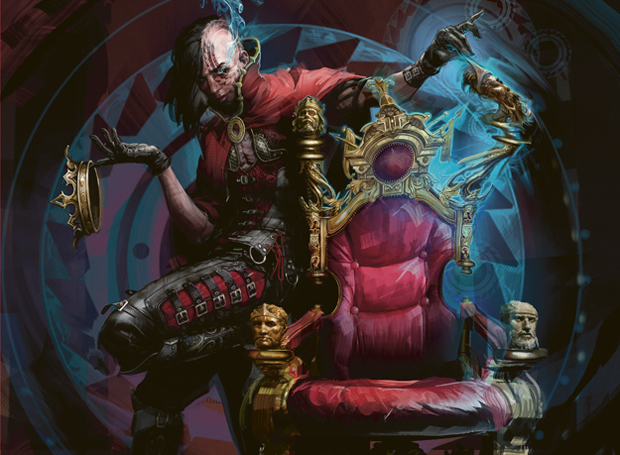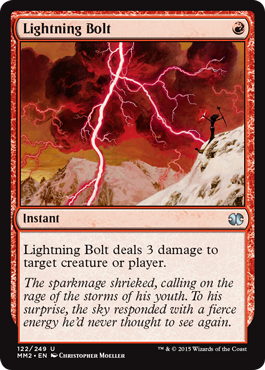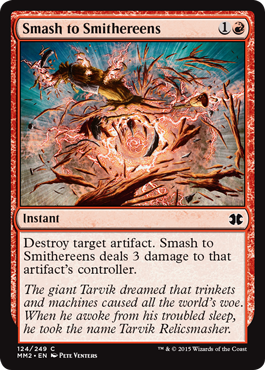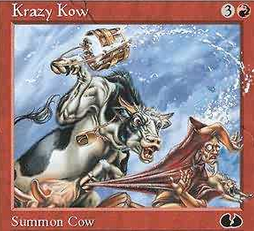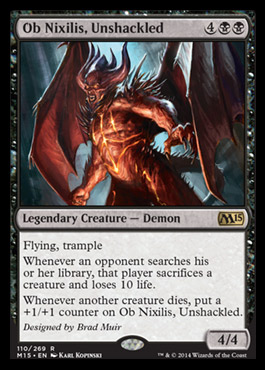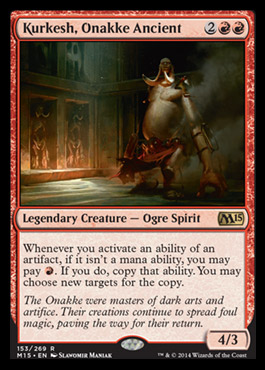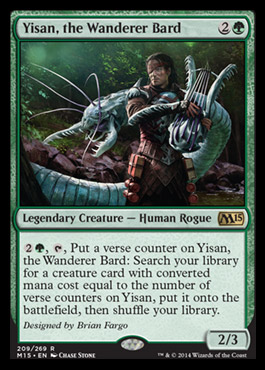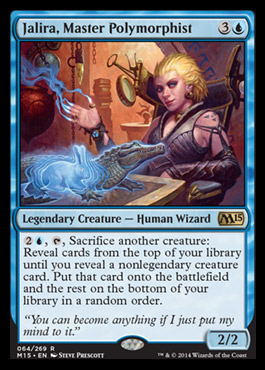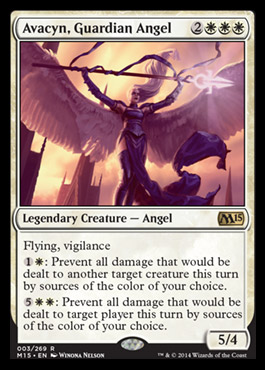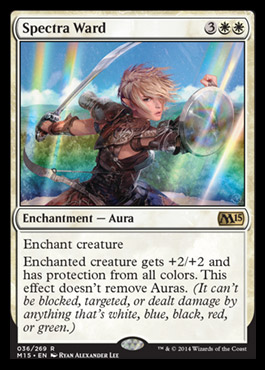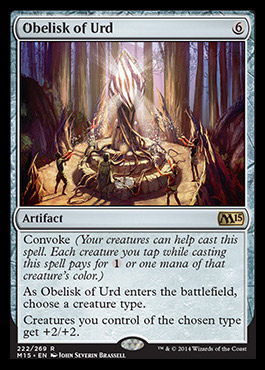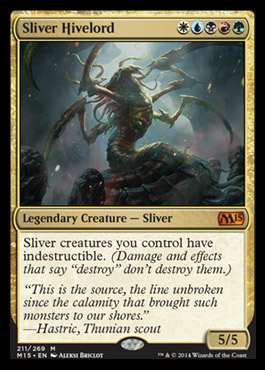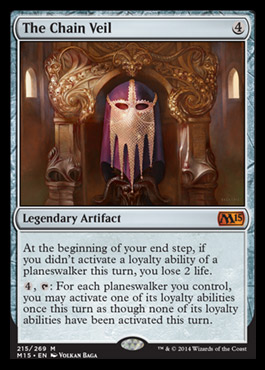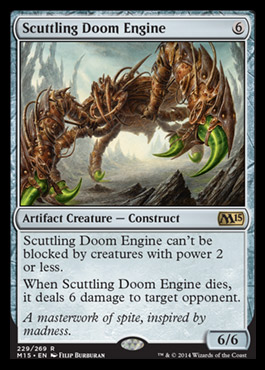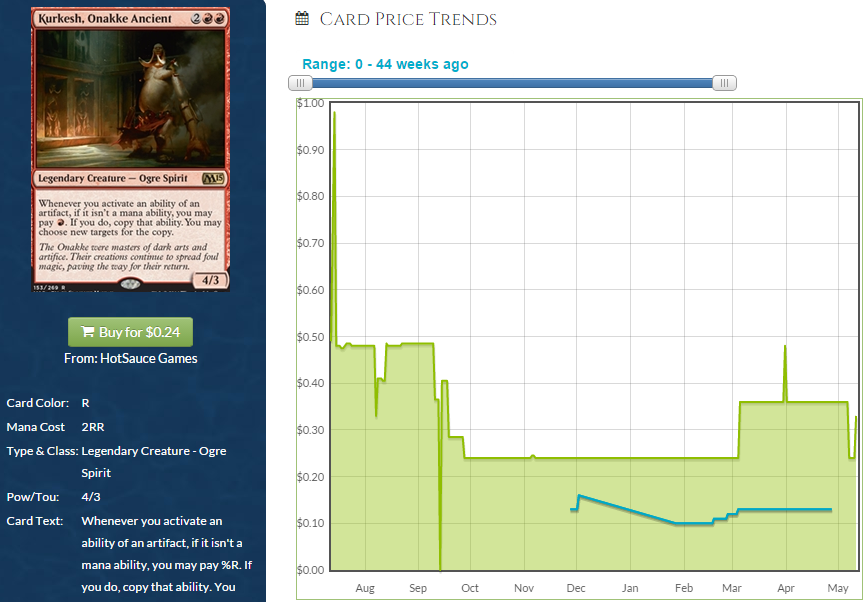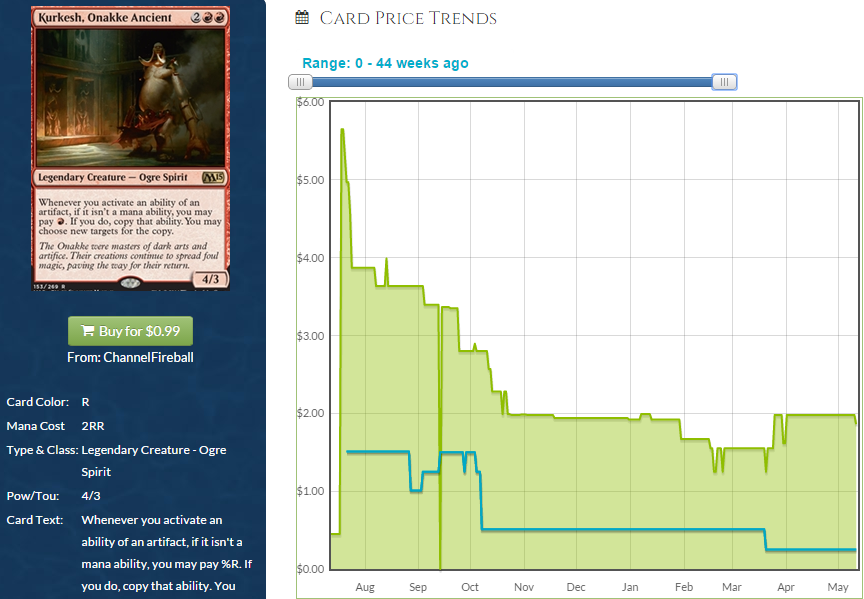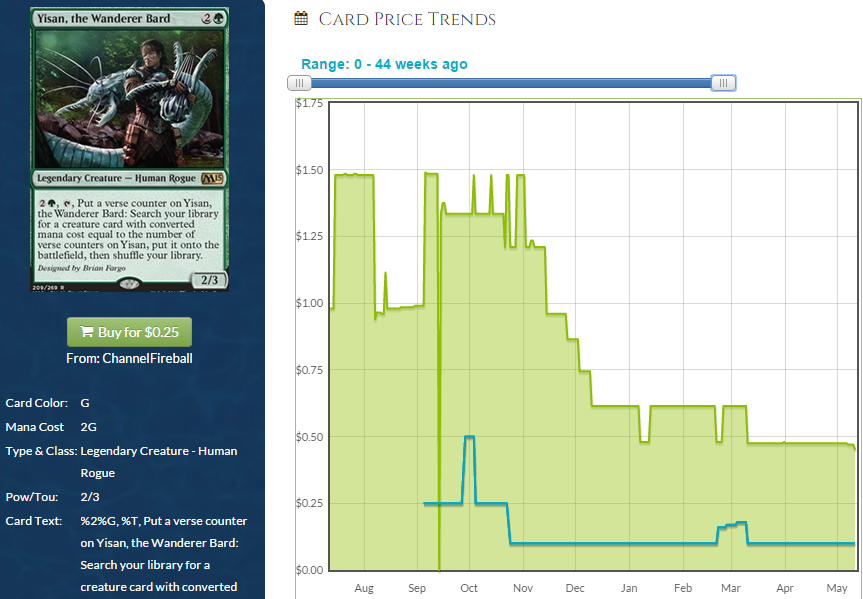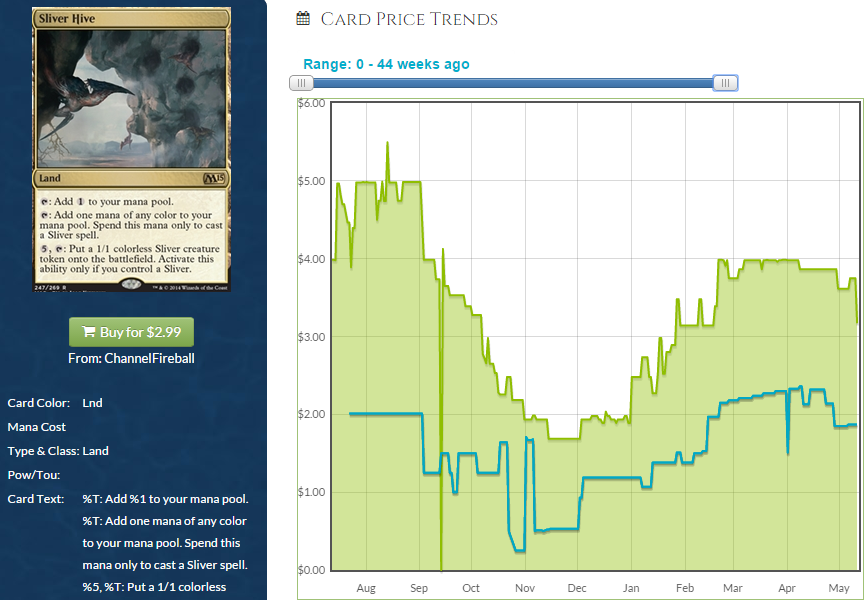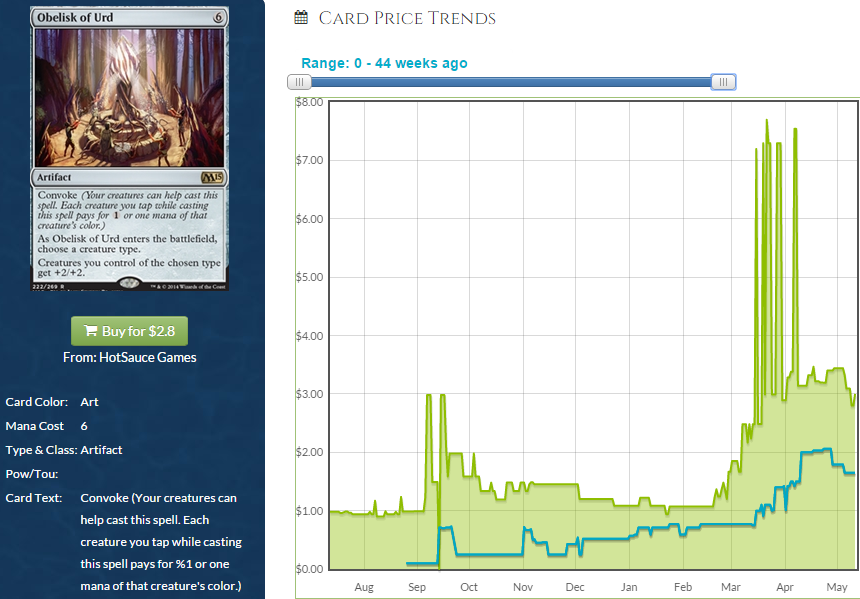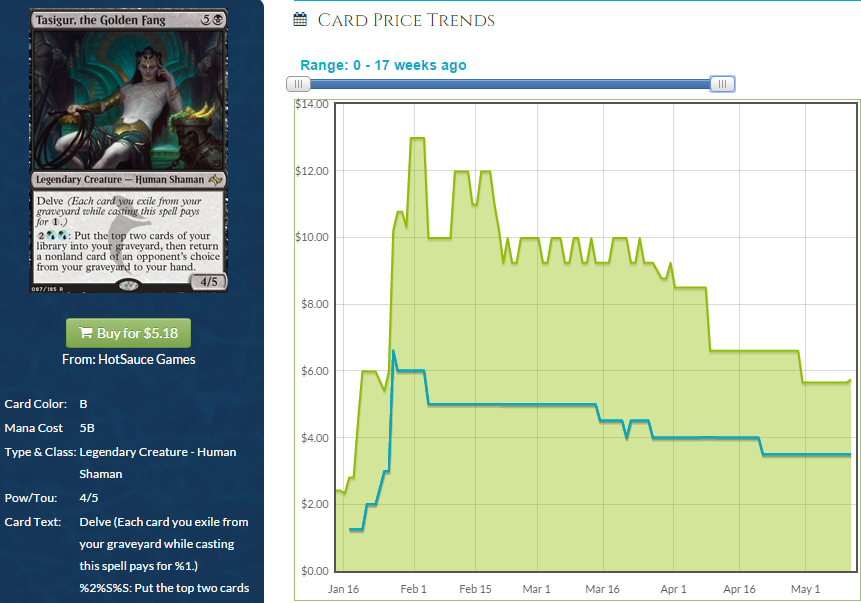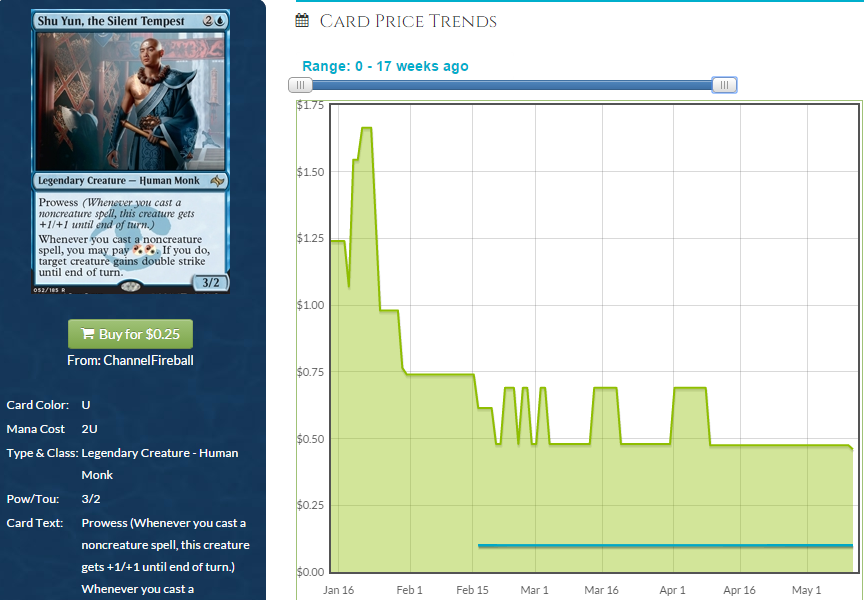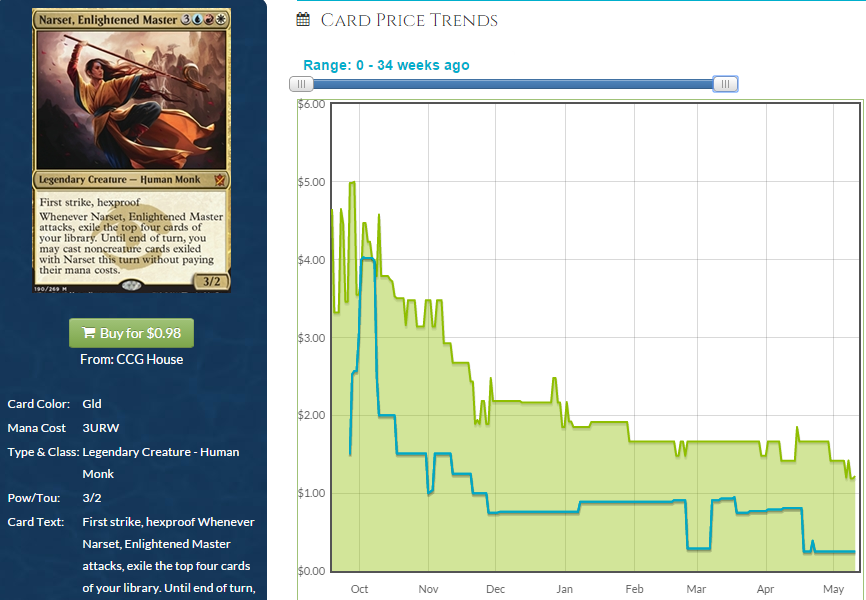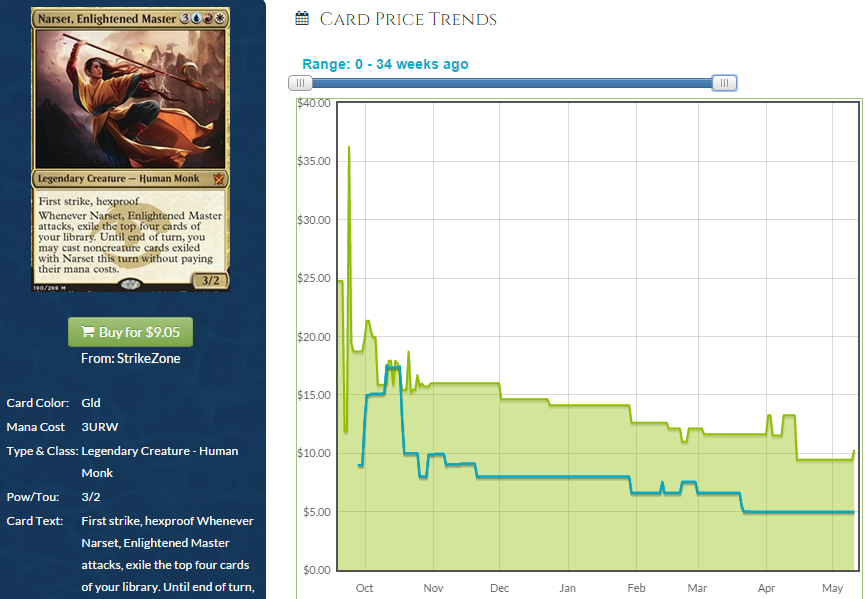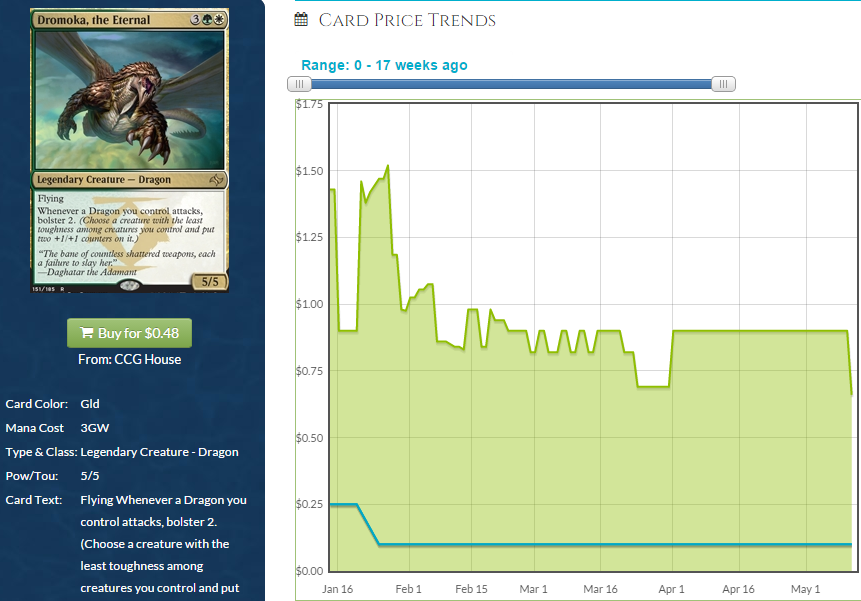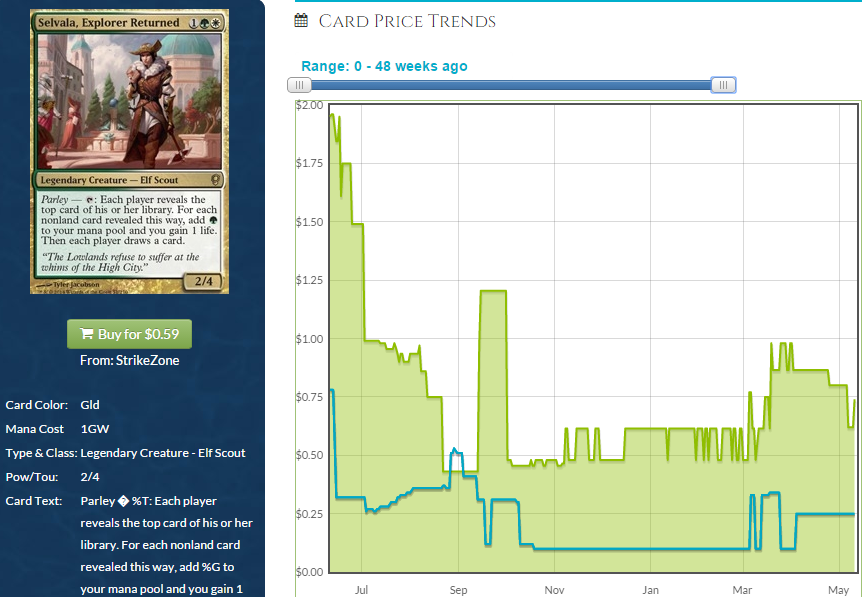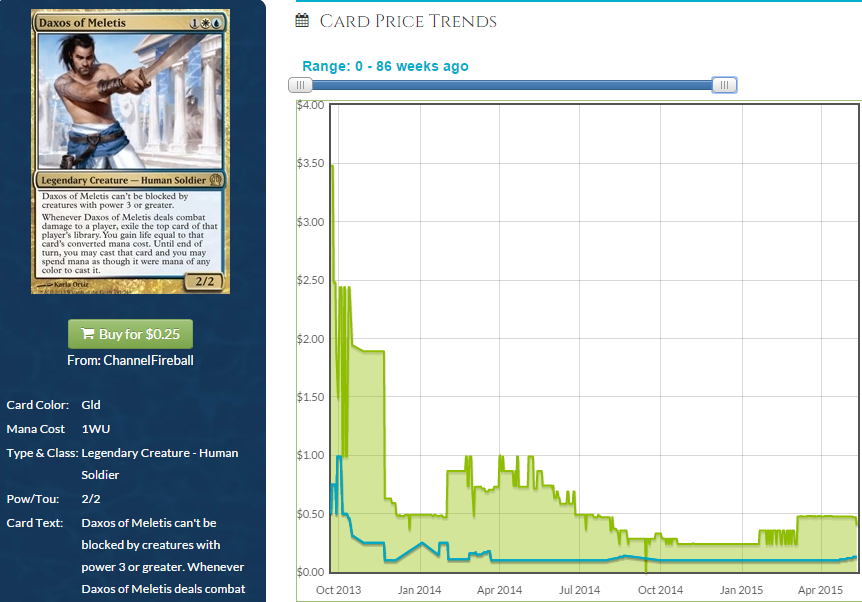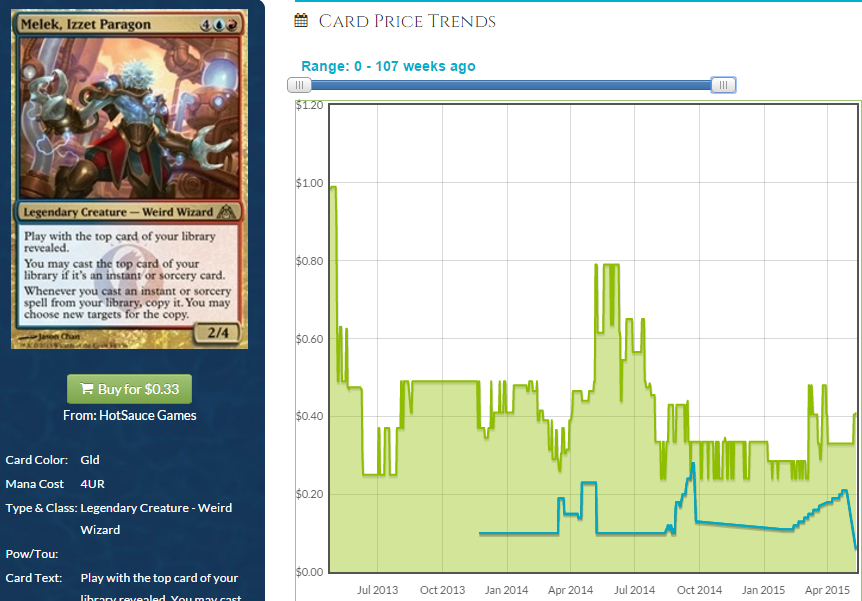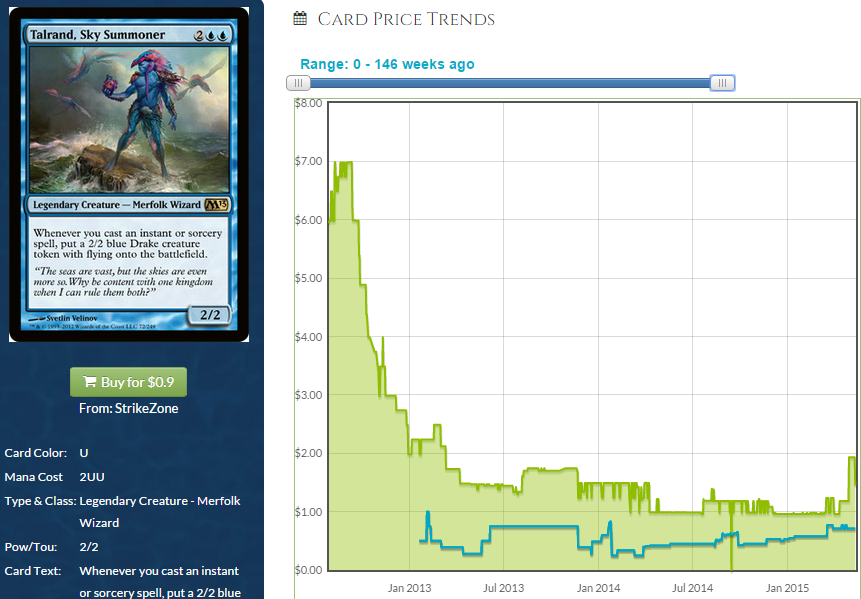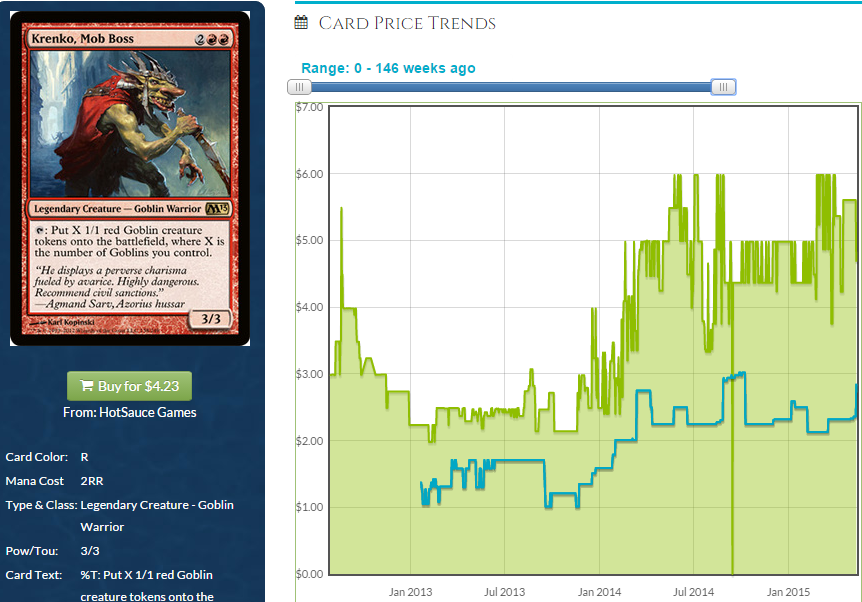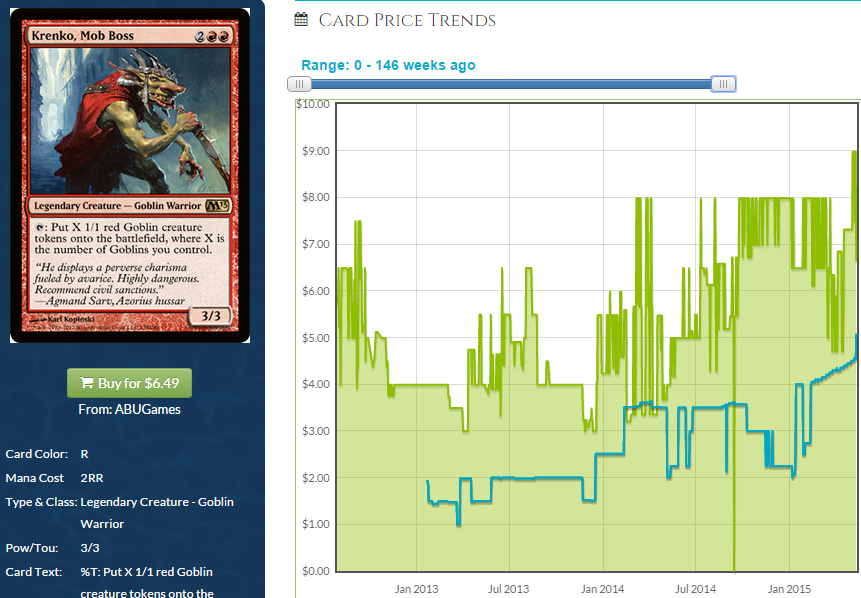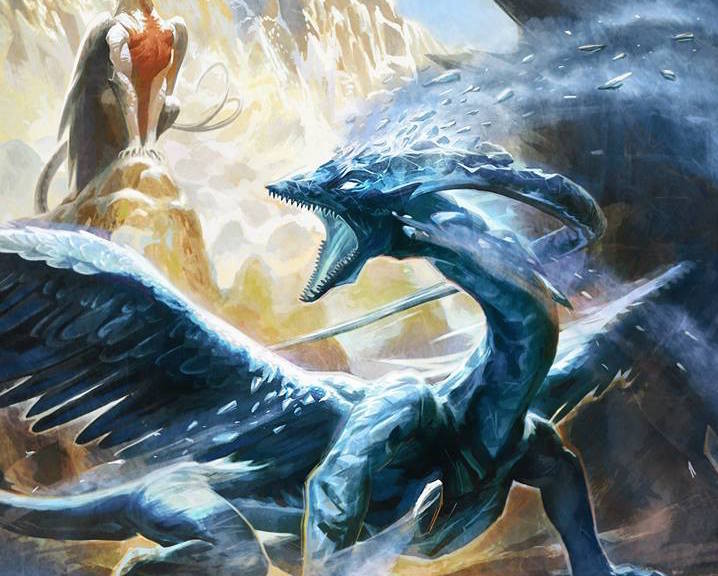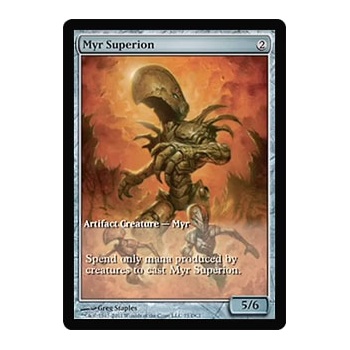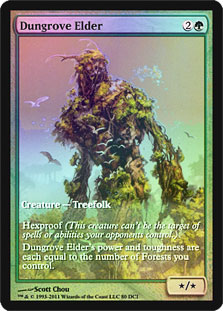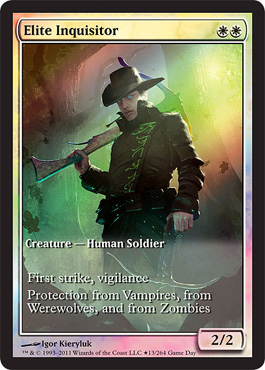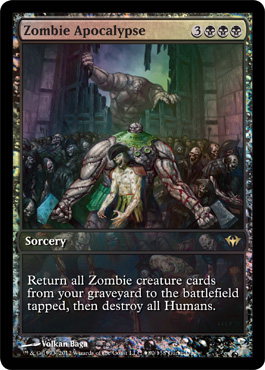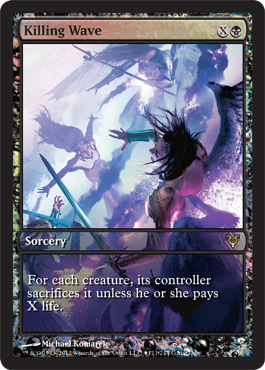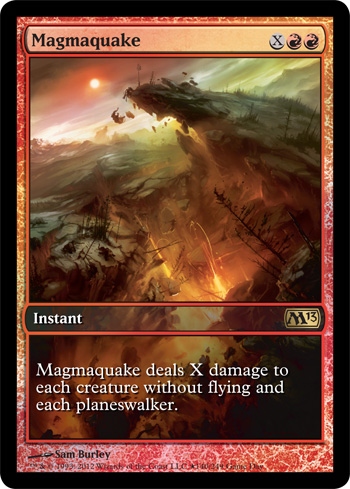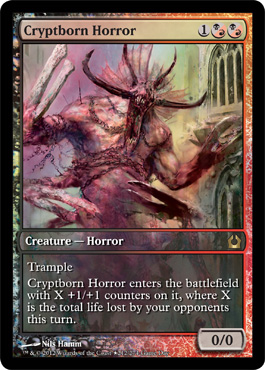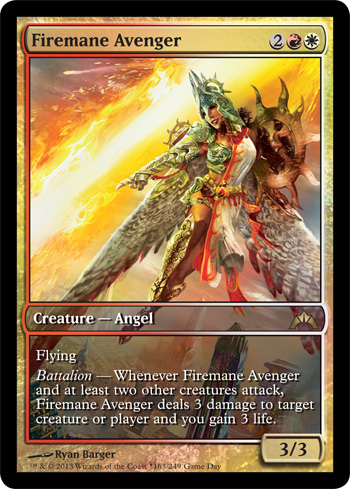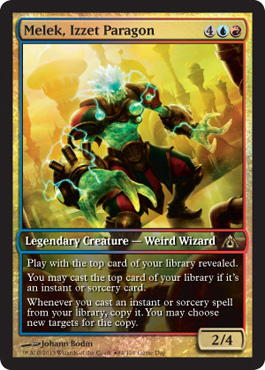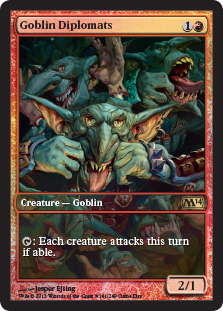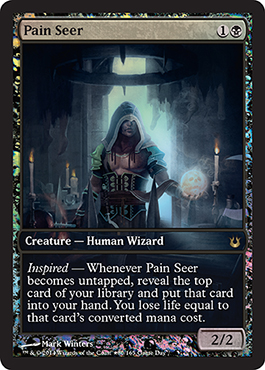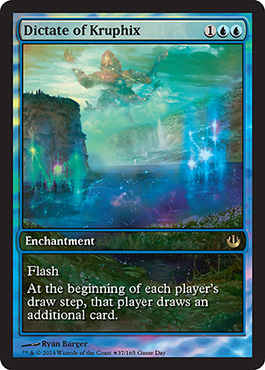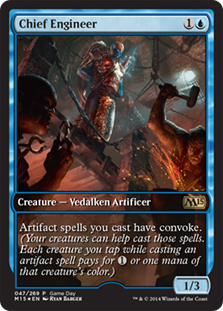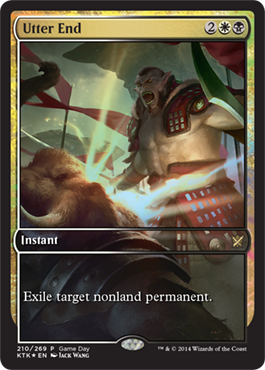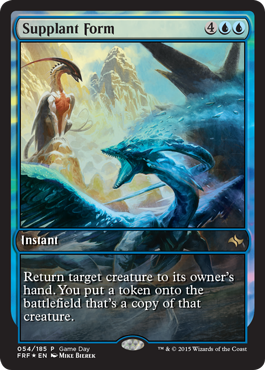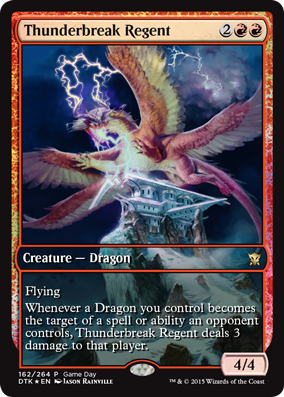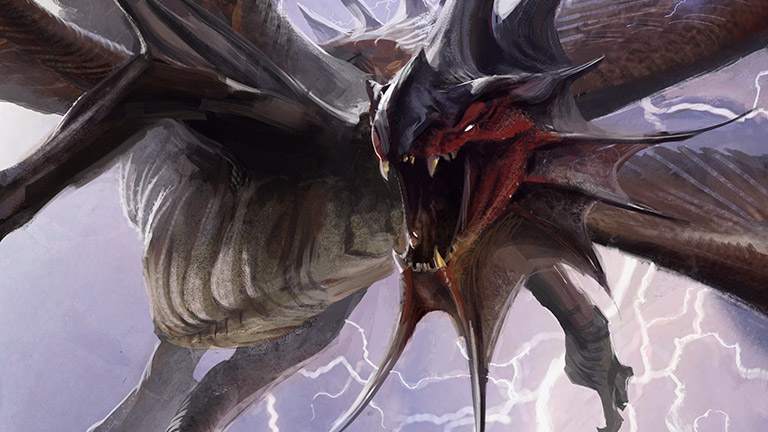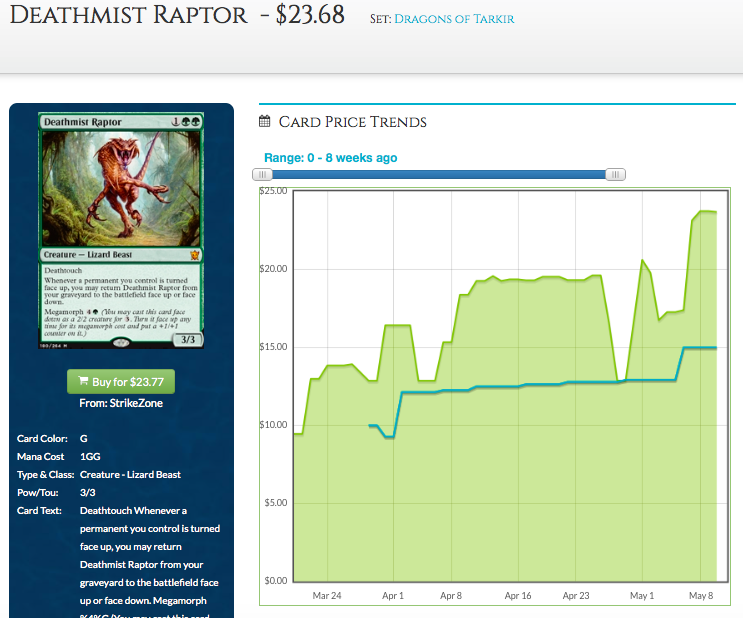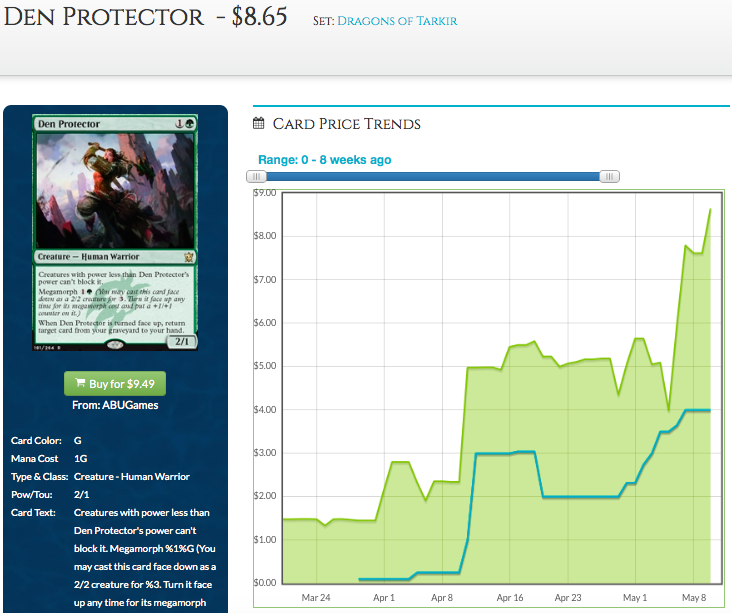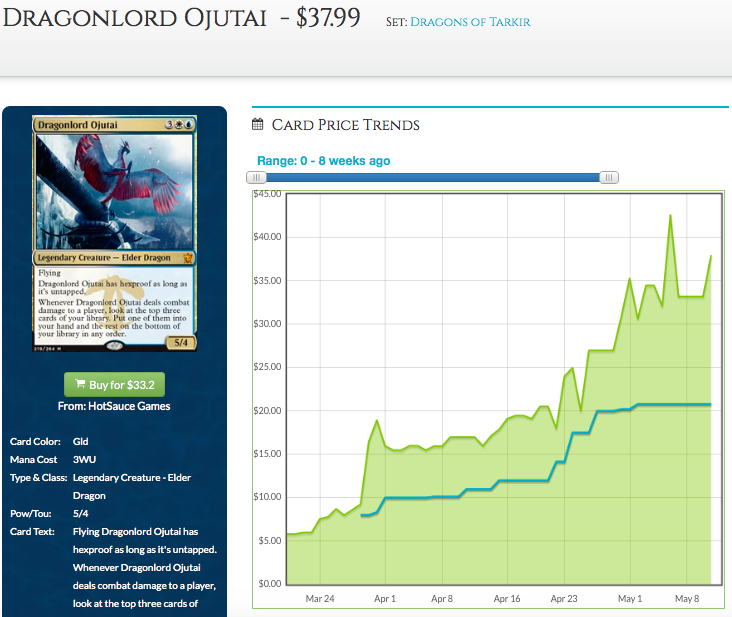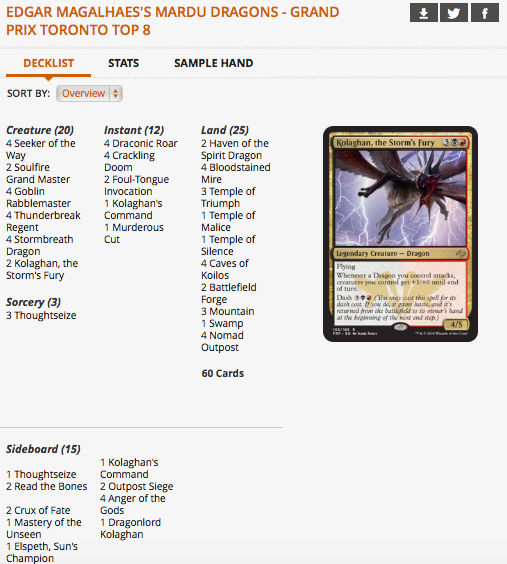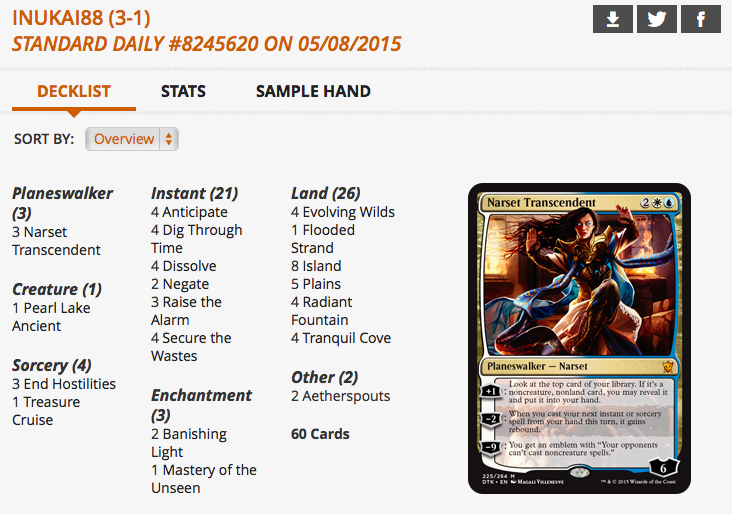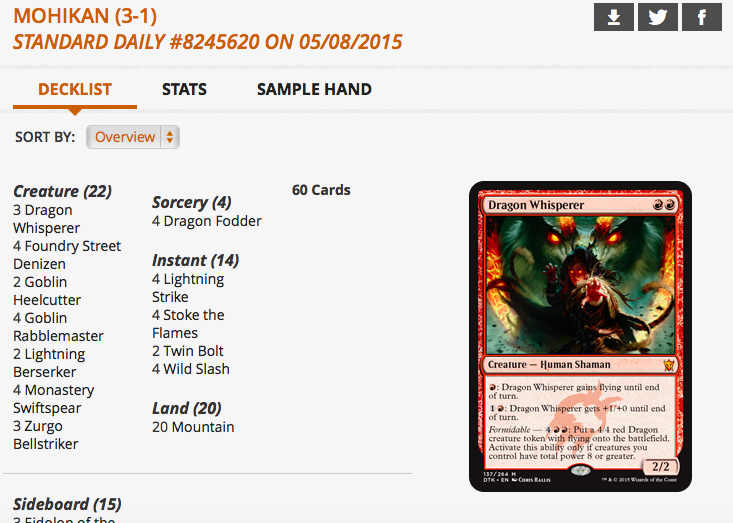By: Derek Madlem
This last weekend, I worked at Grand Prix Atlantic City with Aether Games. There were two things I wish we had known going in:
1. How terrible a place the entire state of New Jersey really is
and
2. The full spoiler for Modern Masters 2015
Don’t get me wrong, my team tried to warn me how terrible Atlantic City was but I just couldn’t believe it was THAT bad. But now, I can say that after eating subs with “mutz” for every meal that I was definitely not impressed. No businesses opened on time or stayed open as late as advertised … the sub shops wouldn’t (couldn’t?) even give us a total for our food orders and basically every food order came back wrong. We thought we were safe when we stopped at a Chik-Fil-A on the way out of the state, but even they swapped out sausage for chicken on the chicken breakfast sandwiches we ordered.
The one thing Atlantic City has going for it is how beautiful the skyline looks … in the rear view mirror.
The full spoiler was a different issue all together. Since traveling to these events requires bringing a lot of things, most stores had to print out their “hot lists” beforehand which had to be a significant risk with the spoilers not showing up until we were all there and set up Friday morning.
The Triplets
Three significant uncommons dodged reprinting in Modern Masters 2015: Path to Exile, Inquisition of Kozilek, and Serum Visions. We already knew at the time that Path to Exile was being printed as an FNM promo, but the lack of Inquisition and Visions in the full spoiler caused a bit of a flurry in the room. Buy prices on these cards reached as high as $7 this weekend, whether or not that price transfers to online stores is yet to be seen.
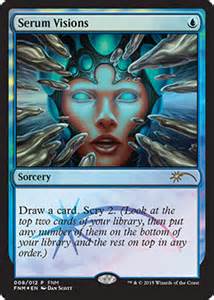 While I don’t expect the FNM promos to have too substantial an effect on the price of regular Serum Visions, it will provide a low cost FOIL alternative. It’s also sure to provide endless years of sophomoric jokes due to the very unfortunate artwork. Somebody actually APPROVED this artwork.
While I don’t expect the FNM promos to have too substantial an effect on the price of regular Serum Visions, it will provide a low cost FOIL alternative. It’s also sure to provide endless years of sophomoric jokes due to the very unfortunate artwork. Somebody actually APPROVED this artwork.
Inquisition of Kozilek is probably a near-lock for reprint in Battle for Zendikar so I don’t think this is a great time to buy in as a spec target…but it’s probably approaching the top of the graph as far as cashing out goes so if you’re sitting on extras, now’s the time to pull the trigger.
Most notable among the rares missing this set was Goblin Guide; the previous source for spoilers had this guy listed at being included in the set and his absence has already caused the price to start climbing.
The Signs
Modern Masters 2015 also brought us a number of signals from Wizards of the Coast. Wizards clearly does not want staple uncommons to be expensive. The inclusion of cards like Electrolyze and Lightning Bolt signal that they do not want the basic components of decks to become a major cost for players. Of course Lightning Bolt being bumped up to uncommon does also let us know that Lightning Bolts will never be in the common box ever again.
Other notable uncommons from Modern Masters that further illustrate this point include Cranial Plating, Darksteel Citadel, and Expedition Map. While these thematically fit with the some of the draft strategies, it’s fairly safe to point out that many those draft strategies are directly inspired by the constructed decks those cards appeared in initially. But there are some cards that were just unrealistically high and they had to end the absurdity.
The Craters
Part of problem with a set like Modern Masters is that sometimes cards can show up and their price simply never recovers. A great example of this would be the mythic dragon cycle we saw the first time around. Keiga and Yosei especially had a pretty solid upward curve on their value over time and that all but stopped once they were reprinted. They didn’t just take a price hit and recover like a number of cards did, they took a price hit and stayed there wallowing in past glory. This time around there’s a number of rares that have to die so that the set gets the mythic rares that it deserves.
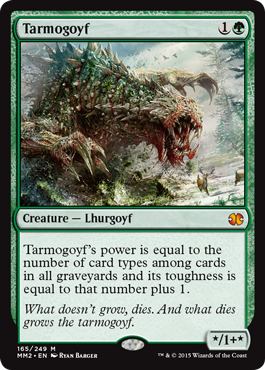 While aggregate box value is a topic for another article all together, the basics are that the average value of a box is constrained to be within a certain percentage of the retail price.
While aggregate box value is a topic for another article all together, the basics are that the average value of a box is constrained to be within a certain percentage of the retail price.
The basic result is that your fetchlands are holding strong at $10+ and your Siege Rhinos are half the price. Someone has to take the hit. Unfortunately if you own these cards, it’s probably too late to do much about it.
 A card like Etched Champion is currently only worth something in paper because of the inefficiency of the market. There are likely more playsets of Etched Champion in the world than there are people that play with Etched Champion, but because those cards are out of circulation or are in poor circulation spots like local inventories the price went up. With an influx of this card into the market, we can expect the price to crater for a very long time. This card is likely to hover around $2 for a very long time.
A card like Etched Champion is currently only worth something in paper because of the inefficiency of the market. There are likely more playsets of Etched Champion in the world than there are people that play with Etched Champion, but because those cards are out of circulation or are in poor circulation spots like local inventories the price went up. With an influx of this card into the market, we can expect the price to crater for a very long time. This card is likely to hover around $2 for a very long time.
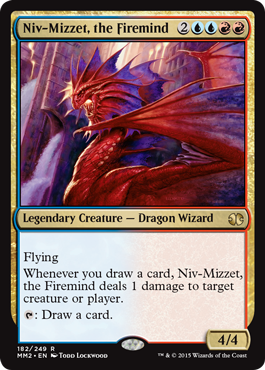 Niv-Mizzet is just dead at this point. The duel deck had already handed this card a pretty substantial blow, but another printing at rare is going to push this card even further down into oblivion. I will not be surprised to see the old Niv-Mizzet in the bulk rare box alongside his Return to Ravnica counterpart.
Niv-Mizzet is just dead at this point. The duel deck had already handed this card a pretty substantial blow, but another printing at rare is going to push this card even further down into oblivion. I will not be surprised to see the old Niv-Mizzet in the bulk rare box alongside his Return to Ravnica counterpart.
Basically anything you see in this set that is not a tier one rare like Cryptic Command or Noble Hierarch is going to go straight to Bulk Town USA.
The Staggers
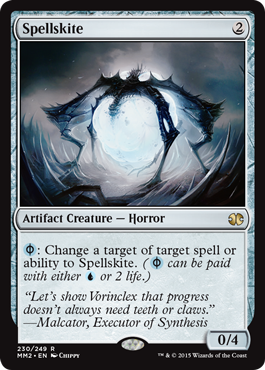 Spellskite was recently holding around $25 and has now been put on the short list for a bloodbath. A card like Spellskite will take a substantial hit because it’s primarily a sideboard card in Modern but it does have the advantage of slotting into any deck thanks to it’s Phyrexian mana activation cost. I expect one to dip as low as $10 once they flood the market, and that’s probably the point where everyone dog piles back on. Spellskite has a significant future thanks to Splinter Twin‘s power so there’s likely to be a pretty substantial recovery after the initial hit.
Spellskite was recently holding around $25 and has now been put on the short list for a bloodbath. A card like Spellskite will take a substantial hit because it’s primarily a sideboard card in Modern but it does have the advantage of slotting into any deck thanks to it’s Phyrexian mana activation cost. I expect one to dip as low as $10 once they flood the market, and that’s probably the point where everyone dog piles back on. Spellskite has a significant future thanks to Splinter Twin‘s power so there’s likely to be a pretty substantial recovery after the initial hit.
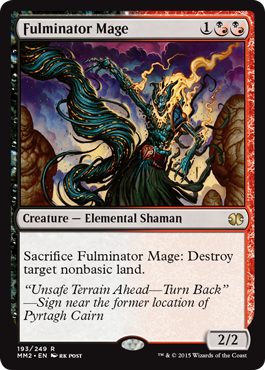 Fulminator Mage is easily one of the most overpriced cards in Modern right now, at $40 for a card that primarily dwells in the sideboard of a tier three deck it’s almost laughable. But as we’ve seen in the past, being the scarcest component of a “budget” deck like Living End can drive up the price of a couple cards to ridiculous proportions. With a reprint the already low demand for this card should be satiated pretty easily, I would be amazed to see this card over $20 a year from now.
Fulminator Mage is easily one of the most overpriced cards in Modern right now, at $40 for a card that primarily dwells in the sideboard of a tier three deck it’s almost laughable. But as we’ve seen in the past, being the scarcest component of a “budget” deck like Living End can drive up the price of a couple cards to ridiculous proportions. With a reprint the already low demand for this card should be satiated pretty easily, I would be amazed to see this card over $20 a year from now.
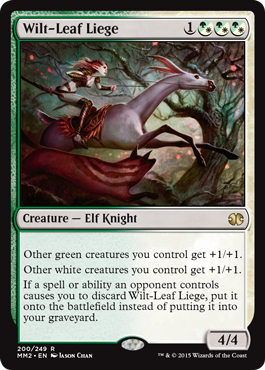 If you’re like me, you had a hard time believing the $15 price tag on this one, then it shot up to $30 overnight. Wilt-Leaf is a solid inclusion in a very limited number of decks. While it’s sweet to see 6/7 Siege Rhinos, the reality is that at the four mana slot there just isn’t room in a lot of Modern decks. The discard effect is a pretty sweet hedge against Liliana of the Veil, but Obstinate Baloth does the same thing, nets you four life, and is a relevant sideboard card against burn decks. I expect the Liege to take a pretty solid shot to the face with the repint, knocking it down to the $10-14 range before it begins making a very slow recovery climb. Very slow.
If you’re like me, you had a hard time believing the $15 price tag on this one, then it shot up to $30 overnight. Wilt-Leaf is a solid inclusion in a very limited number of decks. While it’s sweet to see 6/7 Siege Rhinos, the reality is that at the four mana slot there just isn’t room in a lot of Modern decks. The discard effect is a pretty sweet hedge against Liliana of the Veil, but Obstinate Baloth does the same thing, nets you four life, and is a relevant sideboard card against burn decks. I expect the Liege to take a pretty solid shot to the face with the repint, knocking it down to the $10-14 range before it begins making a very slow recovery climb. Very slow.
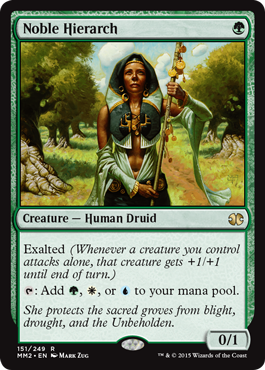 Noble Hierarch will likely be a case study for future staple rare <cough>Snapcaster Mage<cough> reprints. Because Hierarch is so prominent in Modern, I don’t expect the price to fall near as dramatically as some of the other cards. This last weekend in Atlantic City we had basically zero of these cards come across the table to buy which leads me to believe that most people are just holding on to them for play value. I expect it to settle out around $40-45 and start climbing as soon as the dust settles.
Noble Hierarch will likely be a case study for future staple rare <cough>Snapcaster Mage<cough> reprints. Because Hierarch is so prominent in Modern, I don’t expect the price to fall near as dramatically as some of the other cards. This last weekend in Atlantic City we had basically zero of these cards come across the table to buy which leads me to believe that most people are just holding on to them for play value. I expect it to settle out around $40-45 and start climbing as soon as the dust settles.
 Cryptic Command is a card that I don’t expect to fair as well this time around. Frankly $60 was an unreasonable price point for this card already. With a year of full art promos and two printings for a card that typically shows up as a two-of I’m just not seeing the same levels of demand that are present with Noble Hierarch. I expect Cryptic to hit the $25-30 range and begin a slower recovery.
Cryptic Command is a card that I don’t expect to fair as well this time around. Frankly $60 was an unreasonable price point for this card already. With a year of full art promos and two printings for a card that typically shows up as a two-of I’m just not seeing the same levels of demand that are present with Noble Hierarch. I expect Cryptic to hit the $25-30 range and begin a slower recovery.
The Disgraced
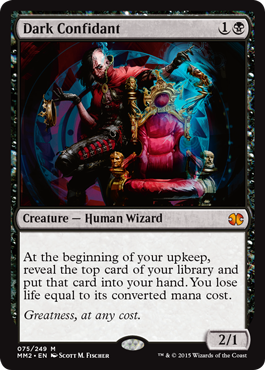 The ruse is probably long over at this point. The appearance of Dark Confidant in many Modern decks has been abysmally low for quite a while now. Even trying to search winning decklists with Dark Confidant on SCG’s deck database returns answers along the lines of Google saying “did you mean to type Splinter Twin?”
The ruse is probably long over at this point. The appearance of Dark Confidant in many Modern decks has been abysmally low for quite a while now. Even trying to search winning decklists with Dark Confidant on SCG’s deck database returns answers along the lines of Google saying “did you mean to type Splinter Twin?”
Dark Confidant has seen a steady decline over the last six months as GBX decks have leaned more towards Abzan and Siege Rhinos than Jund and Lightning Bolts. Bob has already declined 25% in that time period based purely on the realization that the card doesn’t really see much action in Modern anymore…how much lower can it go? Even $40 seems like a number that this card will have no problem flying right past on it’s way down. I would not be surprised to see this card continue to fall for months following Modern Masters‘ release.
Having a strategy going into Modern Masters 2015 is a good plan; get out of singles you open and don’t need quickly while biding your time for the cards that you do. You can execute this strategy even better by trading the money you open from this set into cards that didn’t show up. Arcbound Ravager, Inkmoth Nexus, and Goblin Guide all seem like great cards to pick up while cards like the Emrakul, Iona, and Elesh Norn seem like terrible holds.
Many of the cards showing up this time around are from sets that appeared relatively recently in comparison to the last outing. There was nine years between Mirrodin block and Modern Masters but there’s only been four years since Scars block so expect these cards to behave substantially differently this time around.
Shameless Plug
For any of you that are going to Grand Prix Vegas or Grand Prix Charlotte make sure you stop by the Aether Games booth and say hello and be sure to follow me on Twitter @GoingMadlem
